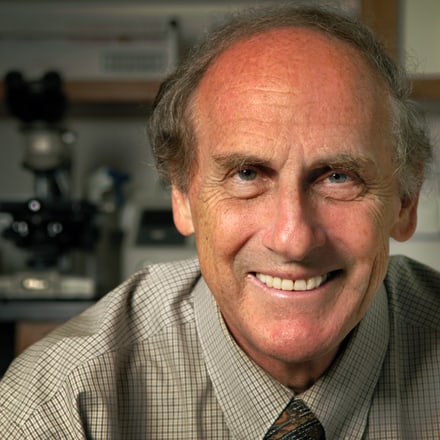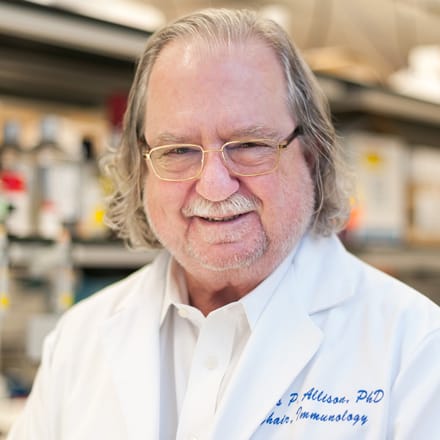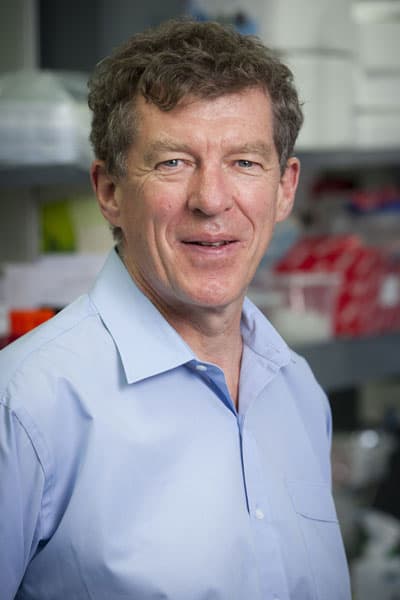On Dendritic Cells and Cancer Immunotherapy
The dendritic cell just might be the most important immune cell you’ve never heard of. First identified in the early 1970s by Ralph Steinman, MD, dendritic cells, or DCs, were long thought to be too rare to play a significant role in the immune response. Thanks to decades of work by Dr. Steinman and other CRI investigators, it is now known that DCs are exceptionally powerful initiators of immunity, with the ability to activate an immune response up to 100 times more potent than any other cell in the immune repertoire. Because of this unique talent, DCs are now a major focus of laboratory and clinical study across the globe, and are critical targets in cancer vaccine development. Long overshadowed by their better-known cousins, B and T cells, DCs are finally getting their day in the sun.
In the early 1970s, the immunology community was just beginning to coalesce around a model of immunity comprising two distinct types—one mediated by B cells and the other by T cells. Most research at the time focused on characterizing these cells and their functions in greater detail. While this model of dual immunity would soon become a pillar of immunology, a critical piece of the puzzle was still missing. Immunologists understood which cells carried out the immune response, but they did not yet know how this response was initiated.
Although I have not been involved previously with tumor immunity, I find myself in a position where I might be able to contribute to the goal of increasing T-cell-dependent, anti-tumor effector function. I am applying for a pilot grant to explore my ideas.
Ralph M. Steinman, MD
CRI Grant Application, September 1979
“Contributions of dendritic cells to anti-tumor immunity”
Immune cells are able to target threats selectively within the body—be they virally infected cells, bacteria, parasites, or cancerous cells—while, in most normal cases, leaving healthy cells unharmed. Specific identifying molecules, called antigens, found on or in offending cells signal the presence of danger. In many instances, though, it isn’t enough simply to put an immune cell in the same vicinity as a threatening cell. Like two strangers on a busy sidewalk, the dangerous cell can pass by completely undetected. Something else is needed to introduce the two and enable the immune cell to recognize the threat and attack it—but what?
This is the question that Ralph Steinman, MD, set out to answer when he began his postdoctoral training in 1970. Although it wasn’t a popular line of inquiry at the time, it was an important one. “The inability to initiate immunity,” Dr. Steinman says, “was an obstacle in many areas of medicine.”
Within three years, Steinman would identify the catalyst, a newly discovered cell that he called the dendritic cell—named after the Greek word for tree because of its branched or star-like shape. “We discovered what looked to us to be an entirely distinct type of cell,” says Steinman. In studies published between 1973 and 1978, he demonstrated that these cells were different in both form and function than any known immune cell and that they were very specialized initiators of immunity. The field, however, was reluctant to accept these findings. “A lot of people didn’t feel these were distinctive cells,” Steinman recalls. “People were more focused on other areas of immunology, and I don’t think they were interested in repeating our experiments to see how potent dendritic cells were at initiating the immune response.”
Steinman went on to establish that dendritic cells are the sentinels of the immune system. They patrol the body, constantly surveying their environment for potential danger. When DCs encounter a suspicious antigen, they capture it, process it, and then deliver it to B and T cells, empowering them to carry out a precise attack against any cell in the body that harbors the antigen.
Steinman then extended this concept to cancer. Knowing that the immune system could play a role in eradicating tumors, he suspected that a better understanding of DCs could lead to new treatment strategies for the disease. Although he had never conducted research in tumor immunology, in 1979 Steinman submitted an application to the Cancer Research Institute for a pilot grant to explore this novel hypothesis. With seed funding from CRI, he was able to carry out his first investigations into the role of dendritic cells in anti-tumor immunity, laying the critical early groundwork for clinical studies that would later follow.
These dendritic cells are a new type that have not been thoroughly investigated as yet, and the possibility exists that they may produce some product useful to increased tumor immunity, and thus to the treatment of cancer patients as a form of immunotherapy. Should Dr. Steinman’s pilot study prove successful, it will provide the impetus for further studies with human tumors.
CRI Review of Steinman’s Grant Application, 1980
Since Steinman’s initial discoveries, the known scope of DC function in immunity has expanded considerably. It has now been shown that DCs play a role in almost every aspect of the immune response. Not only do they help induce immunity, but they also guide the appropriate response. “There are different immune responses depending on different clinical conditions,” says Steinman. “Whether it’s an allergen or a virus or a tumor, the DC can be a mediator to teach the immune system what to do.” DCs are also involved in generating immunological memory and in inducing tolerance, where the immune response is silenced to prevent dangerous autoimmunity.
Clinical studies conducted by Steinman have shed light on the therapeutic potential of DCs, particularly as targets for cancer vaccination. “The driving force in the field of DC science was to initiate an immune response to any antigen,” says Steinman. “I wanted as much to initiate a cancer immune response as I wanted to initiate one against infection.” In the 1990s, he and members of his laboratory, including CRI-funded scientists Madhav Dhodapkar, MD, and Nina Bhardwaj, MD, PhD, published the first studies showing that DCs could be used to elicit a reliable immune response to cancer.
Today, DCs are central to the design of vaccines that aim to train the body’s immune system to attack cancer. These include therapeutic cancer vaccines like Provenge®, which received FDA approval in April 2010 for the treatment of advanced prostate cancer, and more than a dozen other therapeutic vaccines in development for brain, breast, colon, kidney, and ovarian cancers. Steinman calls the approval of Provenge “historic.” He says, “I think it really opened the door to the idea that the immune system can be instructed in such a way that it could prolong survival, even for people with advanced cancer.” But Steinman sees this as just a beginning. “The improvement that’s observed with Provenge is modest. Clearly, the field wants to improve on that result.”
So, what is next for the field of cancer vaccines? According to Steinman, the biggest challenge is not the shortage of ideas; it’s the shortage of resources and coordination. “When you’re doing a cancer vaccine,” he says, “there are many things you have to consider, and these efforts need to be coordinated.” To optimize the patient response to cancer vaccination requires studying immune checkpoints like CTLA-4 and the mechanisms of tumor immune evasion. Combining immunotherapies directed at the patient with more traditional therapies, like chemotherapy and radiation, which are directed at the tumor, is another area of intense scientific interest. “It’s logical to do some things like chemotherapy to attack the tumor and some things like immunotherapy to make the host immune response work better,” says Steinman.
According to him, however, there is a significant lack of support for the latter, which is why the funding and coordination provided by nonprofits like the Cancer Research Institute continues to be critical to advancing this field of research. “We’re all in this together,” says Steinman, “and having CRI’s support is really important.”




